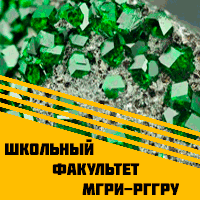Добрый день, Коллеги. Важное сообщение, просьба принять участие. Музей Ферсмана ищет помощь для реставрационных работ в помещении. Подробности по ссылке
The seismic cycle. From observation to modeling / Сейсмический цикл. От наблюдений к моделированию
Earthquakes rank among the most destructive manifestations of the Earth’s dynamics. Can they be predicted? This is often the first question students ask. To answer that right away: no, at present it is not possible to anticipate the date, site and magnitude of future seismic events. However, there does exist a general framework to describe observations related to earthquakes and understand the processes that lead to their occurrence: the seismic cycle.
The objective of this book is to discuss the state of knowledge on the seismic cycle, providing a comprehensive view of the progress made in the last three decades. These advances came from enhanced observation capabilities. Since the late 1990s, most earthquake-prone regions have been equipped with seismological, accelerometric and geodetic networks. These networks could closely monitor the large earthquakes in Indonesia in 2004, in Chile in 2010 and in Japan in 2011, capturing precise images of the earthquake rupture process. Furthermore, these new observations also made it possible to measure the evolution of surface deformation and seismicity in the period preceding and following the large earthquakes. The most surprising result was the discovery of slow, spontaneous earthquakes on the majority of large faults. This discovery, along with the observation of the rapid deformation that followed large earthquakes, revolutionized the concept of the seismic cycle, by introducing a dynamic vision of the spatio-temporal evolution of fault slips. Another development came from studies in the field of morphotectonics, geomorphology and paleo-seismology, which document the history of earthquakes over several cycles. Along with improved observations, friction laws empirically derived from laboratory experiments on rock mechanics provided a framework for interpretation, and enriched numerical and analog models that aim to reproduce the observed behaviors. The coming years promise the fascinating prospect of combining observations with friction laws to validate and determine the parameters of physical models. <...>




